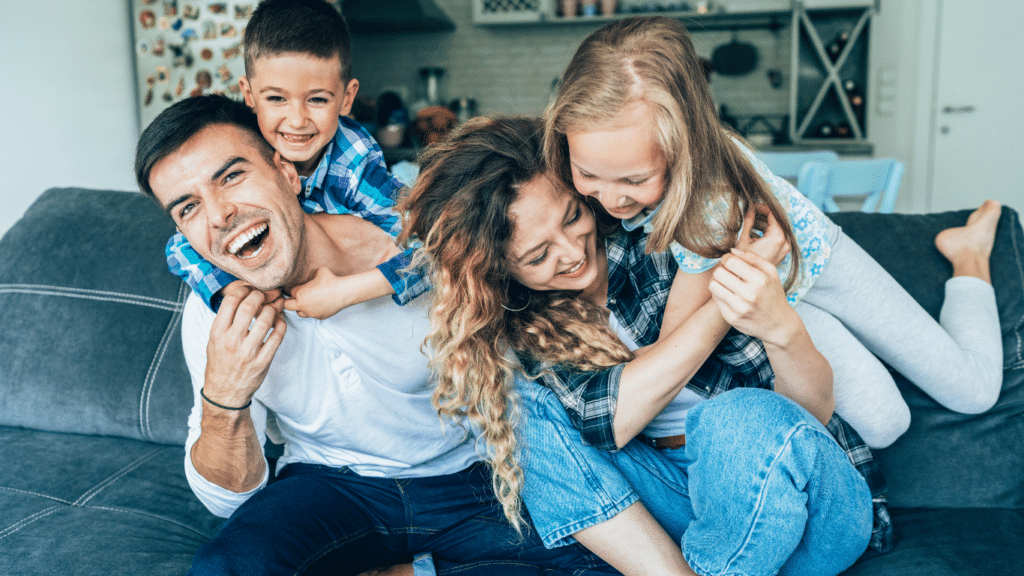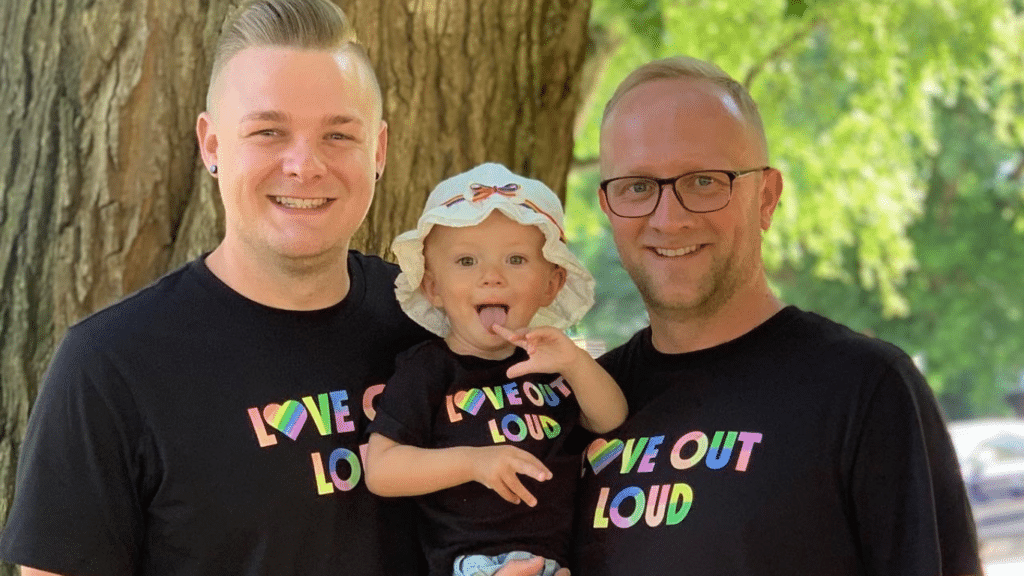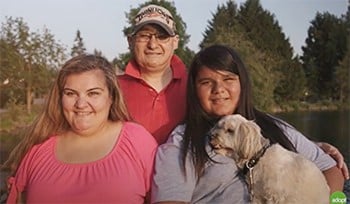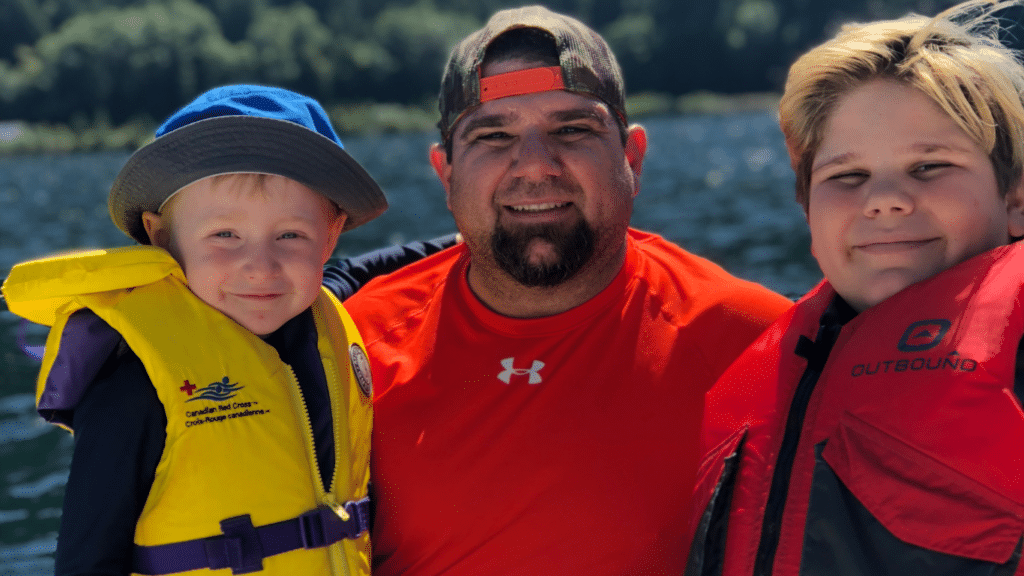A BC film explores the bravery, determination, and humour it takes to rise above the legal systems, societal prejudices, and personal fears inherent in starting a family through adoption.
Nelson, BC-based filmmaker Amy Bohigian’s documentary film, Conceiving Family, follows her and partner Jane Byers’ journey to becoming a family, and combines personal interviews, intimate footage and family photos of four other same-sex couples to tell the collective story of what it takes build a family through adoption and through love.
I spoke with Amy Bohigian about the process of making this unique documentary and why Conceiving Family is “the film she couldn’t help but make.”
When and why did you decide to make the film “Conceiving Family”?
Well, we started our adoption journey in fall 2007, had a homestudy in summer 2008, got a call in fall of 2008 about a potential match and met the foster parents in 2009. There was only five months between the homestudy and a match. We got a call from the social worker and she said, “We have twins and they are gorgeous!” And they are! We adopted trans-racial (Indian/Caucasian) twins – Franny and Theo – at 15 months.
I tried really hard not to make this last documentary, Conceiving Family. It would have annoyed my partner if I had been worried about camera placement and lighting as we were meeting our children for the first time. I knew I needed to be fully present, unmediated by a camera, for the sake of everyone involved, including me.
Afterwards, and after talking about our story and all of its challenges, I thought more about doing a film. After all, it wasn’t your average way to start a family: my same-sex partner was asked to provide her husband’s name during our intake call, we lived with the Christian Fundamentalist foster parents for two weeks during the “transition period” and we doubled the size of our family overnight. Most importantly, I wanted a way for Franny and Theo to see how we all came into each other’s lives.
About a year into parenting, I really wanted a way to share the ways adoption had transformed our lives, for the better. The movie was started with a grant from the Victoria Foundation, which the Belonging Network helped us apply for. I wrote a proposal to the Victoria Foundation, who had a call out for projects that increased awareness of adoption, to tap the potential of the gay and lesbian community as prospective adoptive parents.
The Belonging Network has been a huge support in this. They put out a call to their members in their ENews and Focus on Adoption magazine for couples/families who were willing to be part of a documentary. I would tell their adoption stories and use bits of our footage to weave it all together.
We had a great response and interviewed five couples. Four of them are in the movie. All of them had completed adoptions. One couple featured in the film – Jane and Amy – had adopted 20 years ago and are the first gay couple in B.C. to get joint guardianship. Jane and Amy’s adopted daughter is now grown, so they decided to foster a young boy two years ago, and have since adopted him and his sister into their family.
What was it like to meet Louise and Ian, the twins’ foster parents?
We were so scared of them. They had the power to put a stop to the placement. We knew they were not comfortable placing the children with us, and we were afraid that they could stop (the adoption). And they were afraid of us, too. They were concerned that we would not be flexible in our parenting. I remember they asked, “How will you feel if the kids turn out to be straight?”
At first, the social workers sat us down together in the same room. Then we had to live with them in the same house for two weeks. This is a normal process in adoption. Usually the transition is a few days, up to a week, but, because we were adopting twins, it had to be longer. We stayed with them at their home, and for the first week they taught us how to care for the children – feeding, bathing – and then we took over for the second week and provided all of the care while Louise and Ian were still there.
How did you create such a special bond with Louise and Ian?
Well, we had to live together. We talked and looked for things in common – food, the weather and art. Ian is a painter, so we had things to talk about. Their friends and our friends both laughed at us because they couldn’t believe it. You couldn’t get two groups of people more apart. And tensions were high because we were taking away their children. They really were like Ian and Louise’s children because they had fostered them since they were newborn. Even though they knew they would eventually be placed, they had grown very close to them. That was a good thing because it means that the kids still have a very close relationship with Ian and Louise.
Do you still see them?
Oh yes! We still visit them often. It’s so good for the kids and for us.
What are some of the adoption challenges that are unique to gay parents/couples?
There’s greater intentionality. Gay and lesbian parents don’t wake up one day and say, “We’re pregnant!” Every one of the couples in the film really, really wanted to be parents, but these are not “typical” adoptive parents and the system doesn’t have all the boxes figured out in the adoption process for gay and lesbian parents. There’s an assumption that all people looking to adopt are (going to be) part of a heterosexual couple.
Social workers told us point-blank that we would not be considered as readily as male/ female couples and that we wouldn’t have the same options and opportunities. Institutionally, there’s still lots of room to go, but there are some great people – social workers and administrators – who are working hard to create space for an evolving definition of family. [Attitudes] are changing, and systems/processes are getting more inclusive.
How will you continue to support yourselves, your family and your children? What kinds of resources are available to gay parents or are needed?
We look for formal resources, for us and the kids, in the form of films and books, so that we know we’re not alone. We are also lucky to have great neighbours and friends. We also have and try to occasionally associate with other friends and families that are same-sex parents, so that our children will have the experience of seeing other families like theirs. In Nelson, there are some other same-sex parents, and we’re lucky to have them as friends. In Vancouver, there are other resources like the Belonging Network GBLT picnic and larger gay parent groups. I think people in less gay/lesbian – friendly communities probably hesitate to have children because they’re unsure how well it will be supported.
What is your mandate for, or the thing that you most hope to achieve with this film?
I am ultimately making this film for my kids, so that we can look back together and see the love that surrounded the process, and so that they can see how our family began. I would also love people to watch this film and [for them] to think that adoption is cool, and perhaps they should consider this. Hopefully, people that maybe are on the fence would see adoption as a serious option. Because there are a lot of kids in B.C. that need homes!
This is also, fundamentally, a film about love. I especially want people to see the incredible relationship we built with our children’s foster parents. We became friends with a Christian Fundamentalist couple; we lived together for two weeks and became a family through love. The message (of this film) is to look beyond our differences.






